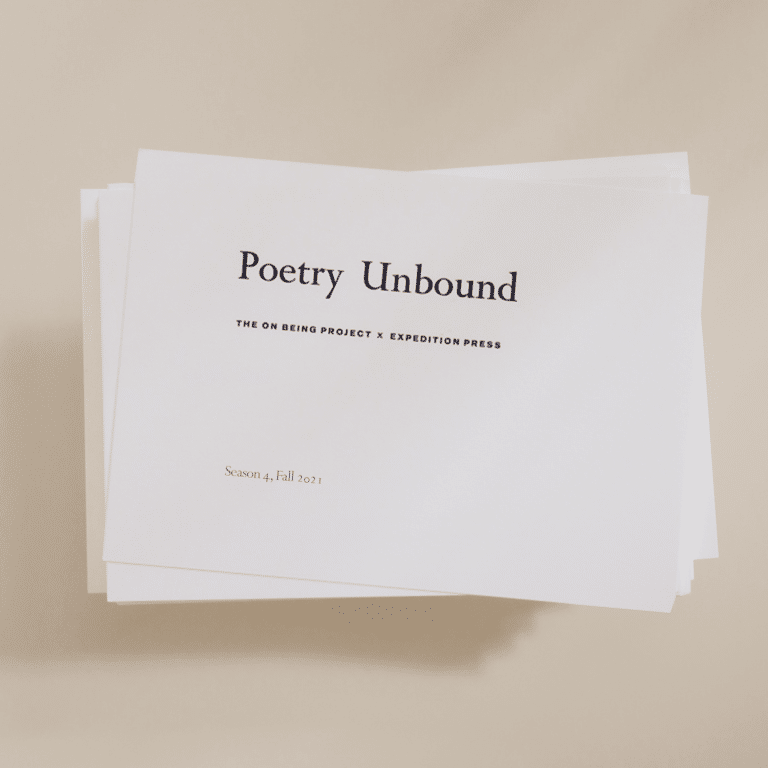
Image by Chandler Christian/Flickr, Some Rights Reserved.
Learning How to Breathe Again
I think I have forgotten how to breathe. Or, at least, I have forgotten how to breathe properly.
Perhaps it is a sign of how out of sync our lives are that so many of us have forgotten how to breathe. When I pay attention to my own breathing, I notice that my breaths are often shallow breaths. The breath goes down to my throat, or somewhere in my upper chest, and comes out quickly, immediately followed by another breath.
It is not that I am short of breath. This is how I have learned to breathe now. It is as if a constant stress and pressure is with me, perhaps the curse of what, some time ago, I called the “disease of being busy.”
We have to learn to breathe again.
I am occasionally reminded of a beautiful line in the Bible, the Gospel according to St. Luke, 11:1, where Jesus prays to God, asking to be taught how to pray. Jesus asks not what to pray for; he does not pray for this or that. He asks how to pray.
I think we need similar instruction about breathing.
Dear God: teach us how to breathe.
Teach us how to breathe beautifully. Teach us how to breathe truly. Teach us how to breathe deeply. Teach us how to breathe in spirit. Teach us to take in a breath that is connected to a healing spirit.
In many languages, the words for breath and spirit are connected. I am reminded of this when I look at our word: Respiration.
Re-spir-ation. In the middle of that word, respiration, the very process of breathing, is spirit. We cannot have “inspiration” without the breath/spirit. Even our lives’ “expiration” is the breath/spirit coming out of us. It’s the breath that sustains us, that inspires us, and leaves us.
The Bible begins with the wind/breath/spirit hovering above the waters. We do not breathe air. We breathe in spirit.
In Arabic and Hebrew, languages that are so intimately connected with one another, the words for self and breath are linked: nafs, nafas.
We cannot be who we are, we cannot become who we are intended to become, without breathing properly. We cannot become truly human until the breath of God enters us and permeates every bone in our being.
Oh, Lord, teach us how to breathe again. Teach us how to breathe well.

One of the oldest Muslim mystical sayings talks about the process of achieving a more refined spiritual consciousness consisting of the following steps:
Hoosh dar dam: To become mindful and aware of one’s breath.
Nazar bar qadam: To have one’s eyes on one’s feet. Literally, to watch where you are, and where you are heading.
Khalvat dar anjoman: To maintain a practice of solitude and full presence, even and especially in the midst of the hustle and bustle of crowds.
It all begins with becoming aware of the breath.
One of the great mystics of the 20th century, Hazrat Inayat Khan, elaborated on the mystery of the breath as such:
“Seen from this point of view one will realize that man has never been separated from God; that with every breath, man touches God. He is linked with God by the current of breath. Just like people drawing water from a well, the rope in their hands and the jug of water in the well. The jug has the water, but the rope is in the hand. In so far as our soul is in the spirit of God, it is the ray of the divine sun, while the other end of it is what we call breath.”
It is not merely enough to have teachings about peace, serenity. We need paths to those teachings. We need spiritual techniques whereby these teachings are embodied. We need practices.
Our bodies need to be vessels, receptacles that help bring these teachings to fruition. We need rituals where we can bring together body, mind, and spirit.
Here is one of the practices that many sages in the Islamic tradition recommend. It is a technique of learning to breathe, and breathe better.
In the morning when you awake, rather than rushing to activity, begin by sitting up. If you can, sit near a window, or even better, outdoors.
Take a breath through your nose. Invite the breath to fill your chest cavity. Feel your breath fill your heart.
Welcome the breath.
Then,
slowly,
slowly
release the breath back through your nose.
Repeat this process a few times.
Observe the breath entering,
expanding your chest,
releasing the breath.
In the beginning, you may even want to put your hand on your chest, to feel this breath coming, expanding your chest, and leaving.
After a few breaths, you’ll notice something dramatic. Your breaths will get deeper, and slower. Your breathing slows down. Your heart rate slows down. You may begin to become aware of the beating of your own heart. The slowing down of the heart is linked to that sensation of peace and tranquility.
After three to four cycles, continue to take in breath through your nose, but now release it through your mouth.
Eventually you will notice that the breath is getting deeper, extending into the cavity beneath your chest. Your diaphragm, that muscular sheet that divides your chest cavity from your stomach, gets involved in this deep breathing.
Repeat this practice a few times during the day. When you notice anxiety setting in during the day, come back to this better breathing.
Breathe better. Breathe more fully. Breathe more beautifully.
Then you can whisper to that Divine Beloved:
My Beloved
This is how you move inside meWithout you
I do not breathe well.


